With thousands of valves in the process areas of the plant, inspecting and maintaining them is a constant labor for operators and mechanics. In February of 2023, a large-scale project took place to replace 16 valves in the GBT process building – where gravity belt thickeners process biosolids from the digesters and send them on their way to the Metrogro storage tanks.
Because the plant’s processes are in constant motion, things can’t just be shut off so coordination and planning are essential. “We always try to look for times when we can concentrate labor
and address maintenance on one part of the system,” says Erik Rehr, maintenance and reliability manager.
The District’s RCM (reliability centered maintenance) program helped identify and plan for the valve replacement project months in advance. Analyzing work requests revealed that there were enough faulty valves in the GBT Building to be addressed by a large-scale effort.
Planning ahead allowed for all the required parts to be on hand and for operations and mechanical staff to find the ideal time of year to schedule the project.
The timing had to be right in order to shut off the belts when there was enough capacity in the digesters to hold onto extra volume, and after the Metrogro hauling season so that any deficits in the tanks wouldn’t impact hauling. February was determined to be the optimal month.
Operators marked the valves to be replaced or repaired and then began prep work the night before. This involved isolating the lines in the system and closing related valves upstream and downstream, and relieving the pressure in the lines where possible so the mechanics would be able to start their work right away in the morning.
These efficiencies and having plenty of mechanics on hand helped to get the project mostly completed in one day, despite challenges from struvite buildup and difficulty in providing complete isolation of the lines. A second work/shut-down day was scheduled for the following week to finish the final valves.
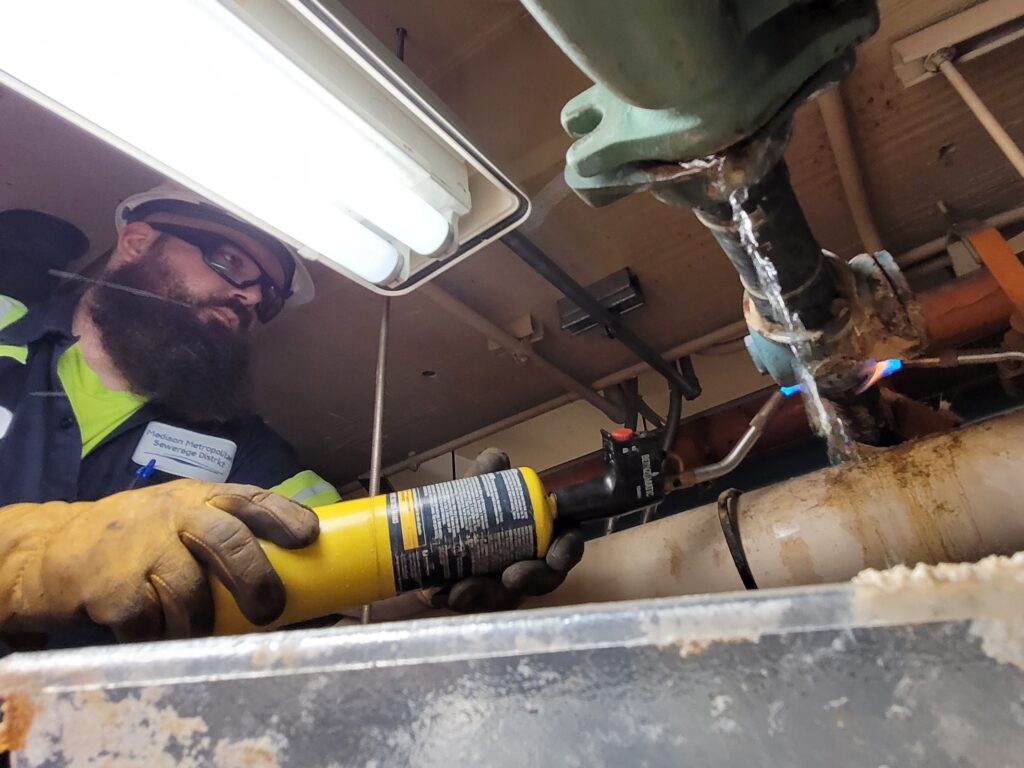
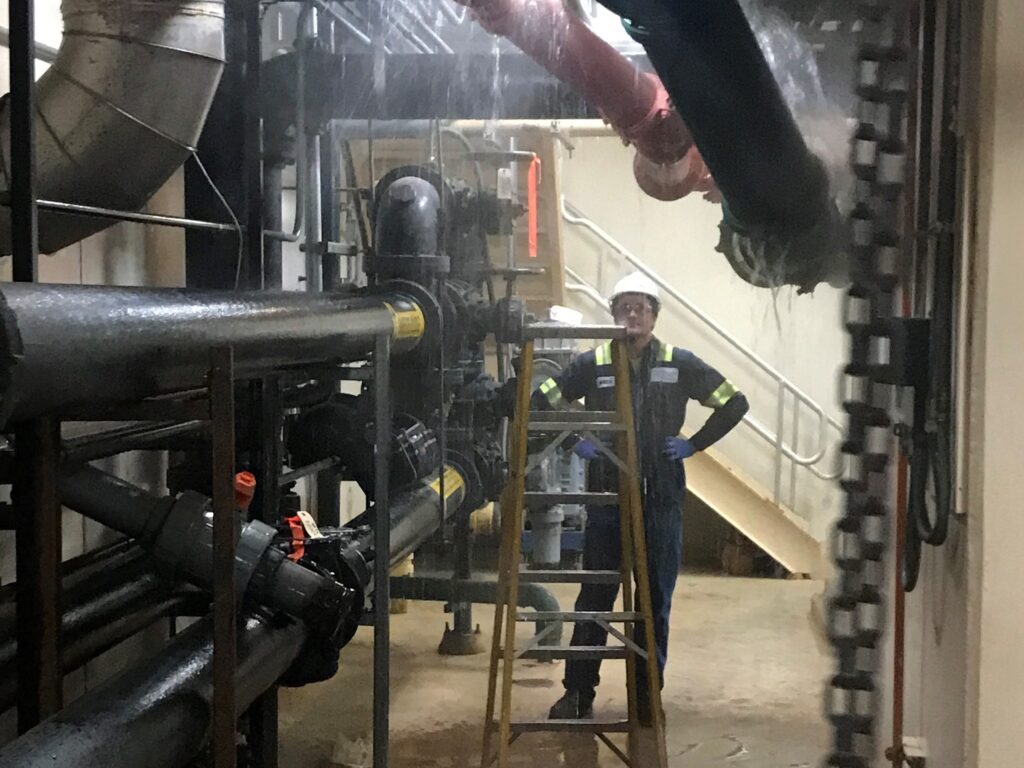
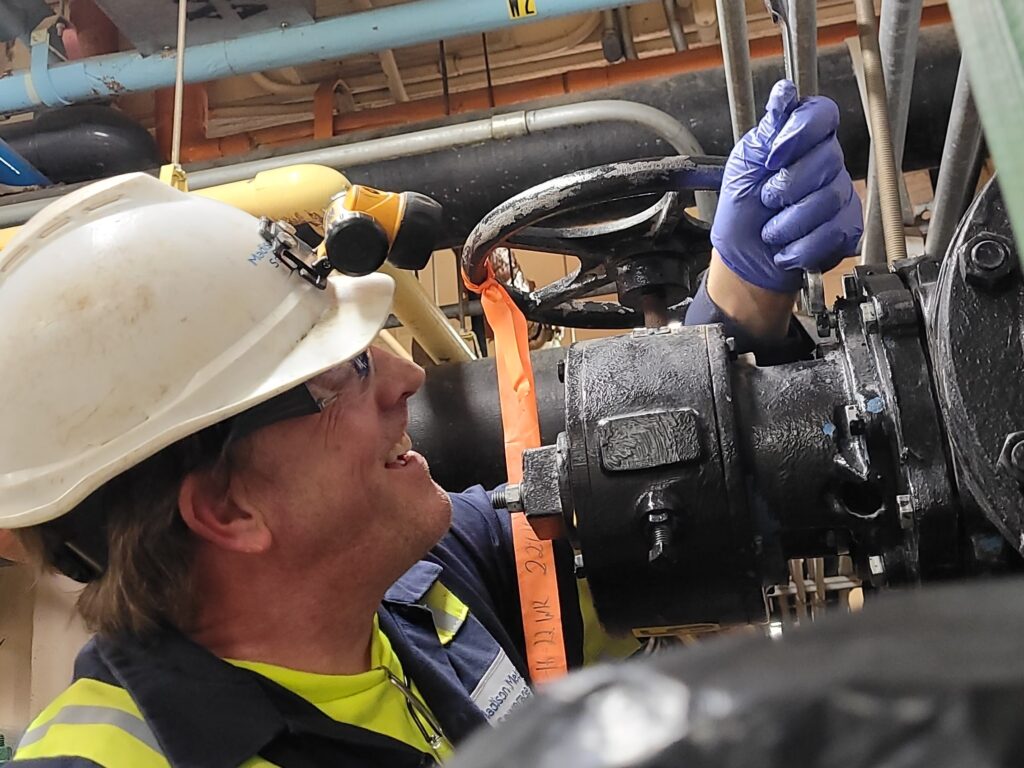
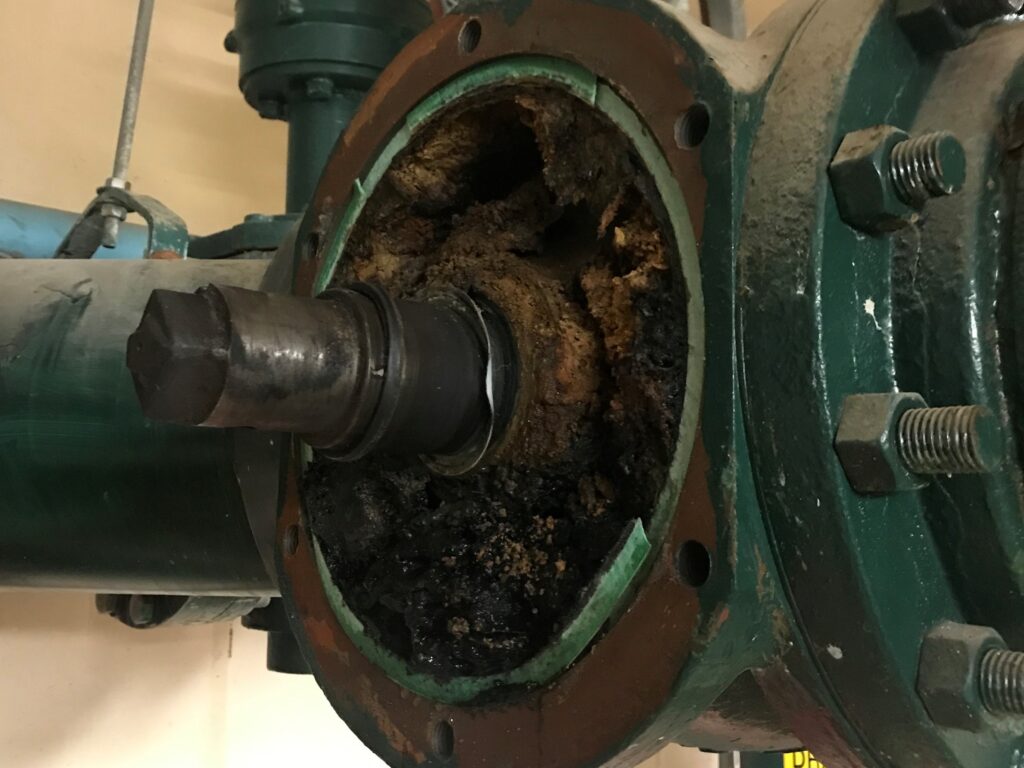
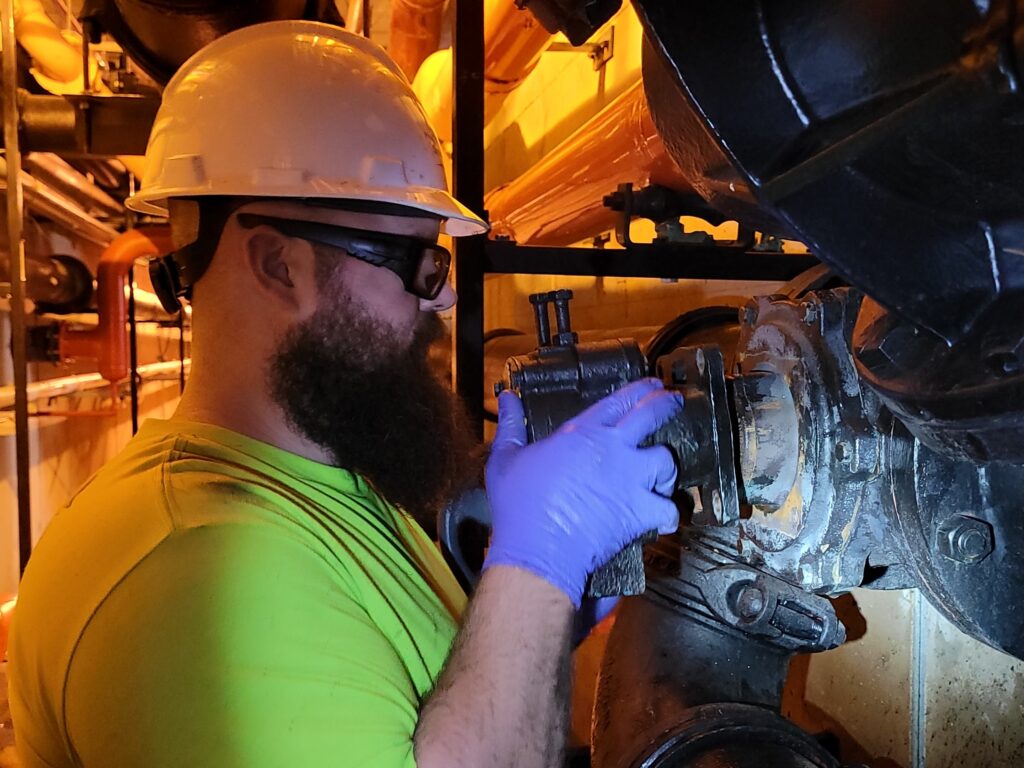
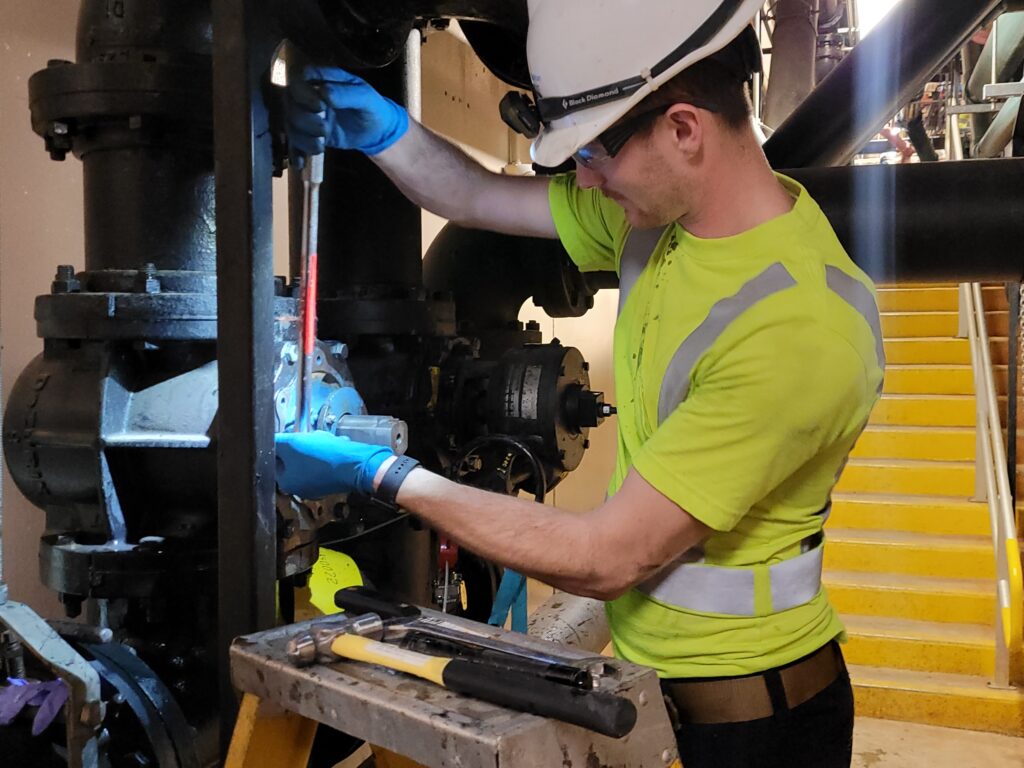
Visit the District category on our blog for more project spotlights and interesting information about our work.
Article written by Jess Spiegel. Photos by Eric Dundee and Brenda Staudenmaier.






